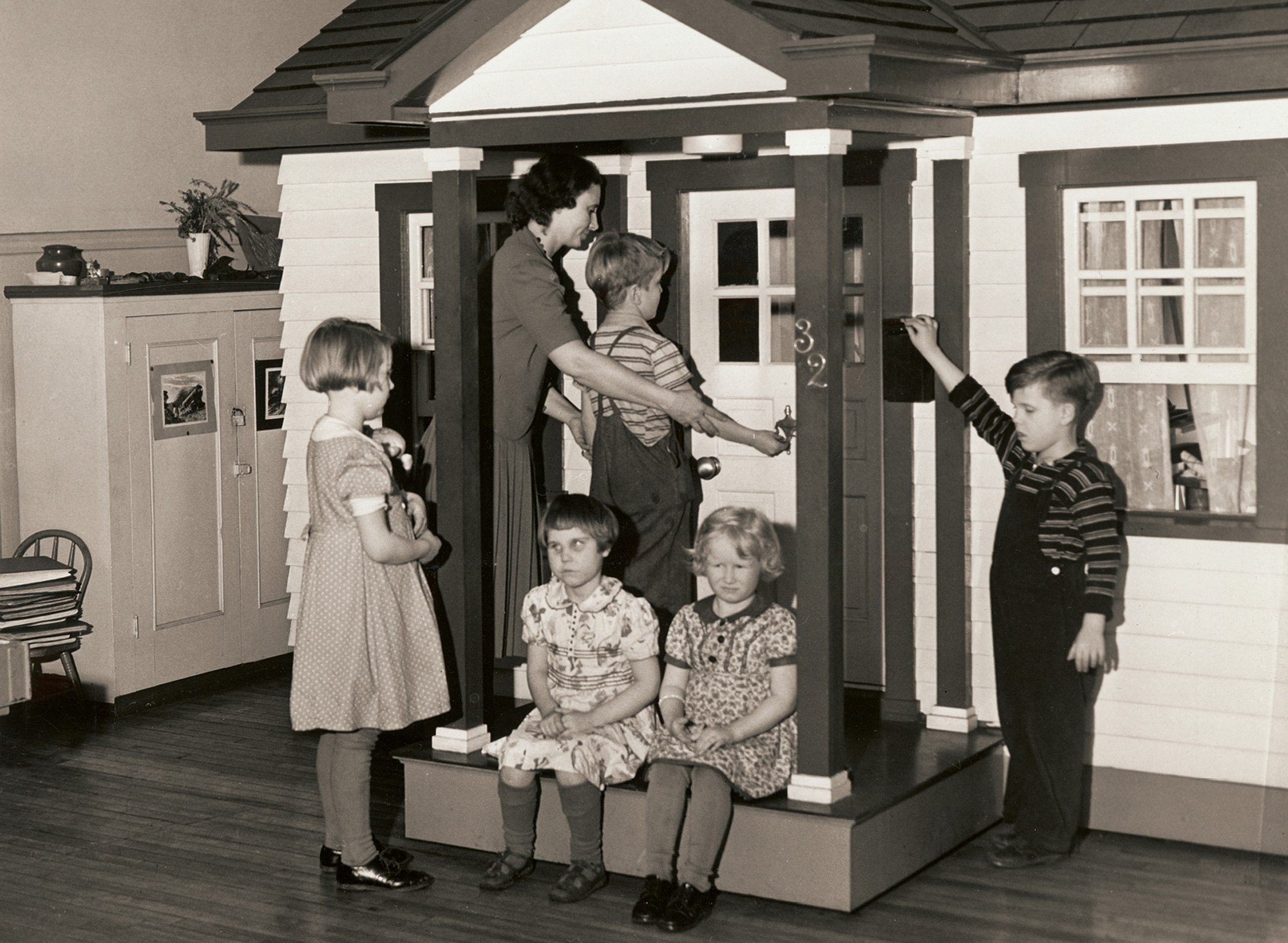Learning at Your Fingertips
The Museum Extension Project and the pedagogy of the tactile
David Serlin

In September 1939, Helen Keller—the American socialist, political agitator, stalwart advocate for the blind, and the world’s most photographed disabled person—was invited to the Chicago Historical Society for an encounter with some furniture. The invitation was extended to Keller by Narcissa Ward Thorne, the socialite philanthropist and collector of antique miniatures who was famous for creating scale-model replicas of period European and American domestic rooms, many of which have been on display at the Art Institute of Chicago since their installation in the early 1940s. While most visitors to Thorne’s period rooms are required to gaze passively at their obsessive decorative details from behind thick panels of glass, Keller received special dispensation to hold the delicate carved furniture in her hands and touch the molded plaster surfaces with her fingertips.
For the sighted, such a backstage tour might have served only to encourage closer attention to detail or to demystify the choices curators make in the museum environment. For Keller, however, such a tour was empirical affirmation of the world that was not dissimilar from stroking the face of President Calvin Coolidge or feeling the bodies of Martha Graham’s dancers (actual events in her life that were made possible by her international reputation). The Thorne miniatures provided for Keller an opportunity to draw a correspondence between—and, in many ways, juxtapose—her broad knowledge of different national histories gleaned through Braille texts and the aesthetic distinctions between period, genre, and national or regional style that could be gleaned only through the sensuous experience of tactility.
While Keller’s access to the secret world of Thorne’s period rooms may have been facilitated by her unique celebrity status, the practice of using tactile architectural models and physical objects—though ones usually less high-end than Mrs. Thorne’s—to teach the visually impaired was hardly unprecedented. Throughout much of the nineteenth and twentieth centuries, tactile learning became as much a lauded goal of popular education for the blind as the development of visualization and experiential learning activities, such as those famously advocated by philosopher-educators like John Dewey, had been for the sighted. In the second half of the 1930s, for example, at approximately the same time that Keller was tracing the contours of a Windsor chair with her fingertips, the Works Progress Administration created a little-known division, the Museum Extension Project (MEP), which devoted much of its work to promoting the kinds of public encounters with architecture and material objects that were typically reserved for elite museum settings.[1] In states like Kentucky, Michigan, Ohio, Pennsylvania, and Wisconsin, the MEP developed a range of specially commissioned tactile objects and teaching curricula that were designed for blind students for whom such objects could be experiential complements to textual description or verbal narration.